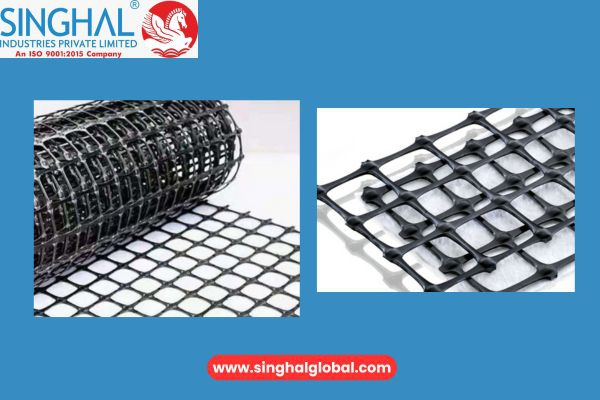In the realm of civil engineering and construction, the need for innovative materials that enhance stability and sustainability has become increasingly significant. One such material that has garnered attention in recent years is the PP Biaxial Geogrid. This article delves into the properties, applications, and pricing of PP biaxial geogrids while highlighting key suppliers in India.
What is a PP Biaxial Geogrid?
A PP biaxial geogrid is a high-performance polymeric material designed to provide reinforcement in soil, rock, or other materials. It is produced from polypropylene (PP) and features a network of interconnected ribs that provide strength and stability in multiple directions. The term "biaxial" refers to its ability to handle tensile loads in both the machine and transverse directions, making it ideal for various engineering applications.
Key Characteristics
-
High Tensile Strength: The geogrid is engineered to withstand significant tensile forces, making it suitable for reinforcing structures that face lateral loads.
-
Durability: Made from polypropylene, PP biaxial geogrids are resistant to chemical and biological degradation, ensuring longevity in various environments.
-
Lightweight and Flexible: Their lightweight nature allows for easier installation, reducing labor costs and time on site.
-
Cost-Effective: Although the initial investment may vary, the long-term benefits and savings in maintenance make PP biaxial geogrids a cost-effective choice.
Applications of PP Biaxial Geogrids
PP biaxial geogrids are employed in a wide range of applications, including:
1. Soil Reinforcement
In the construction of roads, embankments, and foundations, PP biaxial geogrids enhance the load-bearing capacity of soils. By distributing loads over a larger area, they minimize soil deformation and prevent failure.
2. Retaining Walls
These geogrids are often used in the construction of reinforced soil retaining walls. They provide lateral support and improve stability, enabling the construction of taller walls with less material.
3. Pavement Construction
In pavement applications, PP biaxial geogrids help extend the life of asphalt and concrete pavements. By preventing cracking and rutting, they reduce the need for frequent repairs.
4. Slope Stability
Biaxial geogrids enhance the stability of slopes and embankments by providing additional tensile support. This application is crucial in preventing landslides and erosion.
Pricing of PP Biaxial Geogrids
Understanding the Biaxial Geogrid Price is essential for project budgeting. Several factors influence the cost of PP biaxial geogrids:
-
Material Quality: Higher quality materials typically command a higher price due to their enhanced performance characteristics.
-
Roll Size and Dimensions: Larger rolls or customized dimensions may incur additional costs.
-
Supplier Pricing Strategy: Different suppliers may adopt various pricing models based on market demand and competition.
-
Market Conditions: Fluctuations in raw material prices, labor costs, and transportation can also affect the final price.
On average, the price of PP biaxial geogrids in India can range from INR 50 to INR 150 per square meter, depending on the above factors. It’s advisable for buyers to compare prices from different suppliers to ensure they receive the best value.
Geogrid Suppliers in India
When sourcing PP biaxial geogrids, it is crucial to partner with reliable suppliers to ensure quality and performance.
Conclusion
PP biaxial geogrids play a pivotal role in modern engineering and construction, offering numerous benefits such as enhanced stability, durability, and cost-effectiveness. As the demand for innovative materials continues to grow, understanding the biaxial geogrid price and identifying reliable Geogrid Suppliers in India becomes crucial for successful project execution. By leveraging the advantages of PP biaxial geogrids, engineers and construction professionals can contribute to the development of sustainable infrastructure while ensuring safety and efficiency in their projects.
In summary, investing in PP biaxial geogrids is not just a cost-effective choice; it is a step towards a more sustainable and resilient future in civil engineering.
Frequently Asked Questions
1. What is a PP biaxial geogrid?
A PP biaxial geogrid is a polymer-based material made from polypropylene, designed to provide reinforcement in soil and construction applications. It features a network of interconnected ribs that allow it to handle tensile loads in both horizontal and vertical directions.
2. What are the main applications of PP biaxial geogrids?
PP biaxial geogrids are commonly used for:
- Soil reinforcement in roads and foundations
- Supporting retaining walls
- Enhancing pavement durability
- Improving slope stability and preventing landslides
3. Are PP biaxial geogrids environmentally friendly?
Yes, PP biaxial geogrids are durable and resistant to chemical and biological degradation, which contributes to their longevity and reduces the need for frequent replacements, making them a more sustainable option in construction.
4. How are PP biaxial geogrids installed?
Installation typically involves placing the geogrid within the soil or on the surface of the area to be reinforced, followed by backfilling with soil or aggregate material. Proper tensioning and alignment are essential for optimal performance.




